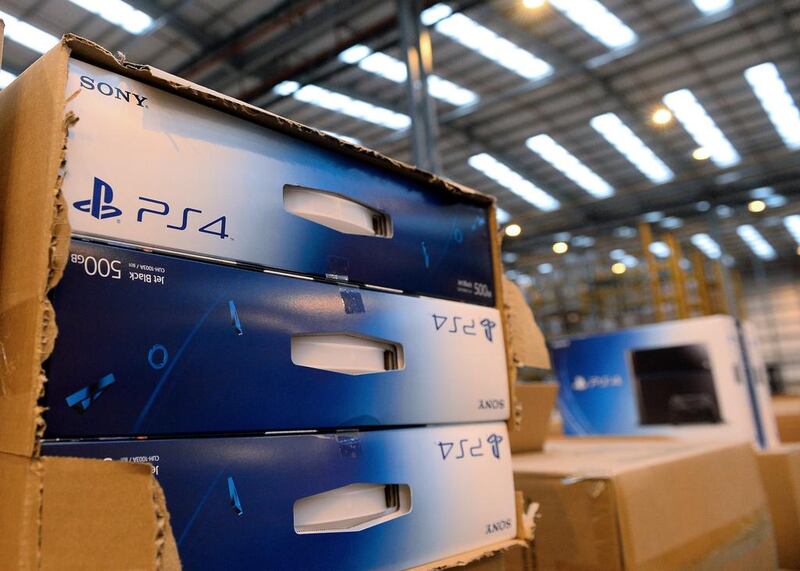The pre-Socratic sage Heraclitus said that you can never step into the same river twice.
The games industry is learning that lesson.
With the release of the PS4 and Xbox One, Microsoft and Sony are hoping that consoles will have a prominent place in the lounges of the future. But with a proliferation of different digital devices and games platforms competing for consumers’ attentions, increasingly sophisticated consumers and a new generation of nimble tech companies that contrast starkly with the ossified and monolithic hierarchies of Microsoft and Sony, the PS4 and Xbox One may well be the former giants’ final console offering.
The Xbox and the PlayStation have long vied to “own the living room”. This internal Microsoft marketing objective describes the company’s aim to become the consumer’s main gateway for digital content.
The last time Microsoft launched a console was in 2005 – a year when Google Mail and Google Maps were yet to be released, Dell dominated the PC market, the bricklike Nokia 1110 was the world’s most popular phone, and Facebook was still called ‘The Facebook’.
But now – amid the smartphone and tablet wars – it seems laughable that one firm could monopolise access to digital content.
For some perspective, consider that combined sales of the iPhone and iPad in Q3 this year were 48 million. Analysts believe it will take Sony five years to sell that many PS4s.
This year, streaming services such as Netflix commissioned online-only series like House of Cards and Arrested Development, changing how viewers watch TV.
And gamers increasingly downloaded their content, rather than shopping for it in person. By the year’s end, it is likely that about half of all computer games will be bought digitally, according to the Entertainment Software Association.
Microsoft and Sony are hoping that by integrating sharing, simultaneous gaming and browsing, and social media into Xbox One and PS4, they’ll be able to stop users from migrating to other devices.
But this looks naive. According to a recent McKinsey report on digital gaming’s reach, the trend is towards greater fragmentation, not less.
Who plays games has also changed. Once, games were the refuge of precocious teenagers and desolate, overweight middle-aged men – but no longer. The average age of today’s gamer is 34, and most gamers above this age are female, according to the Entertainment Software Association.
As the McKinsey authors write, “offline console games dominate in terms of absolute penetration, but casual, online games are increasingly important, and growing quickly.”
To be sure, hard-core gamers still constitute an important market segment for Microsoft and Sony, and spend the most on games and hardware, according to a report by the NPD group.
But these individuals account for an ever-decreasing share of the market.
“Loss of momentum [in console gaming] compared to the rise of connected and online formats, especially casual and social games, is stark,” the authors wrote.
Writers on management have long worried about the ability of large corporations, like Microsoft and Sony, to foster creativity. As Max Weber once noted, human organisation tends towards bureaucracy.
Microsoft is no exception.
A whole host of disgruntled former employees have voiced their frustrations with their former bosses. The picture emerges of a stratified, sclerotic colossus in which creativity is suppressed.
“It was like designing software by committee,” Prasanna Sankanarayanan, a former Microsoft engineer, was quoted as saying in Vanity Fair. “Things moved too slowly. There were too many meetings.”
Sony is also a behemoth – a massive conglomerate of home entertainment, light manufacturing, and financial services, among other industries.
Newer companies are not as fully beset by these problems. Apple’s monomaniacal focus on marketing, product design, and branding is the envy of managers everywhere. Google is still a sprightly innovator. The Seattle games company Valve, despite having an approximate value of US$2.5 billion, has only 330 employees.
As Heraclitus put it: time is a game played beautifully by children.
Valve has created an online barter economy, where players can buy thousands of items through microtransactions costing between a few cents and a few dollars. These items can be used across a number of multiplayer games. They are traded freely among players.
In occupied Germany, cigarettes replaced paper money as the basic unit of exchange. In Valve’s economy, electronic hats and digital pieces of metal are the common units of exchange.
This hat-based economy closely resembles a physical economy. Players are commodities traders. They can seek out arbitrage opportunities. They meet in spontaneously arranged markets. They can hunt for and close deals with hoarders of rare items. Some offer exotic, esoteric collections. Others specialise in an asset class – weapons, medals, shoes. They haggle.
There are exchange rates, balance of payments issues, and recessions. The company has even hired an academic macroeconomist to research and make policy for this electronic economy.
This is just one illustration of how the way people consume games has changed dramatically over the last decade.
Microsoft and Sony must heed Heraclitus: there is nothing permanent except change.
abouyamourn@thenational.ae





